The first time I visited the Iya Valley, Japan took on a new dimension to me. This was partially because of the experiences themselves, and partially because of the unique circumstances of my visit.
I was a guest of the JTB travel agency, who masterfully organized things to do in the Iya Valley, and integrated them with the rest of my group’s media trip to Shikoku. Thing is it was the middle of winter, a season that is tolerable in sub-tropical Shikoku, but still somewhat cold, especially given the Iya Valley’s altitude.
I’ll explain in another article whether or not this is best time to visit Shikoku (and what some alternatives might be). For now, however, allow me to explain to you why this wild pocket of mountains and forest should be on your Japan bucket list—and to gift you with a provisional Iya Valley itinerary.
How to Reach the Iya Valley
Getting to the Iya Valley is rather simple, at least from within Shikoku. It sits relatively equidistant between the cities of Tokushima and Takamatsu. If you plan to travel by train, you can ride the JR Tokushima Line to Awa-Ikeda Station. (Which direction you go depends on where you enter Shikoku—if you enter via Takamatsu you’ll be heading east; you’ll travel west if you’re coming from Tokushima.)
On the media trip I mentioned in the intro, I traveled from Tokushima to Iya Valley, but then continued on to Kochi, rather than heading straight through to Takamatsu. This is also possible for you, regardless of how you travel. Note, however, that if you’re exploring Shikoku via private car (which is certainly advisable within Iya Valley, if not on the island more broadly), your sequencing is slightly less important.
What to Do in the Iya Valley
Start where the Iya River bends
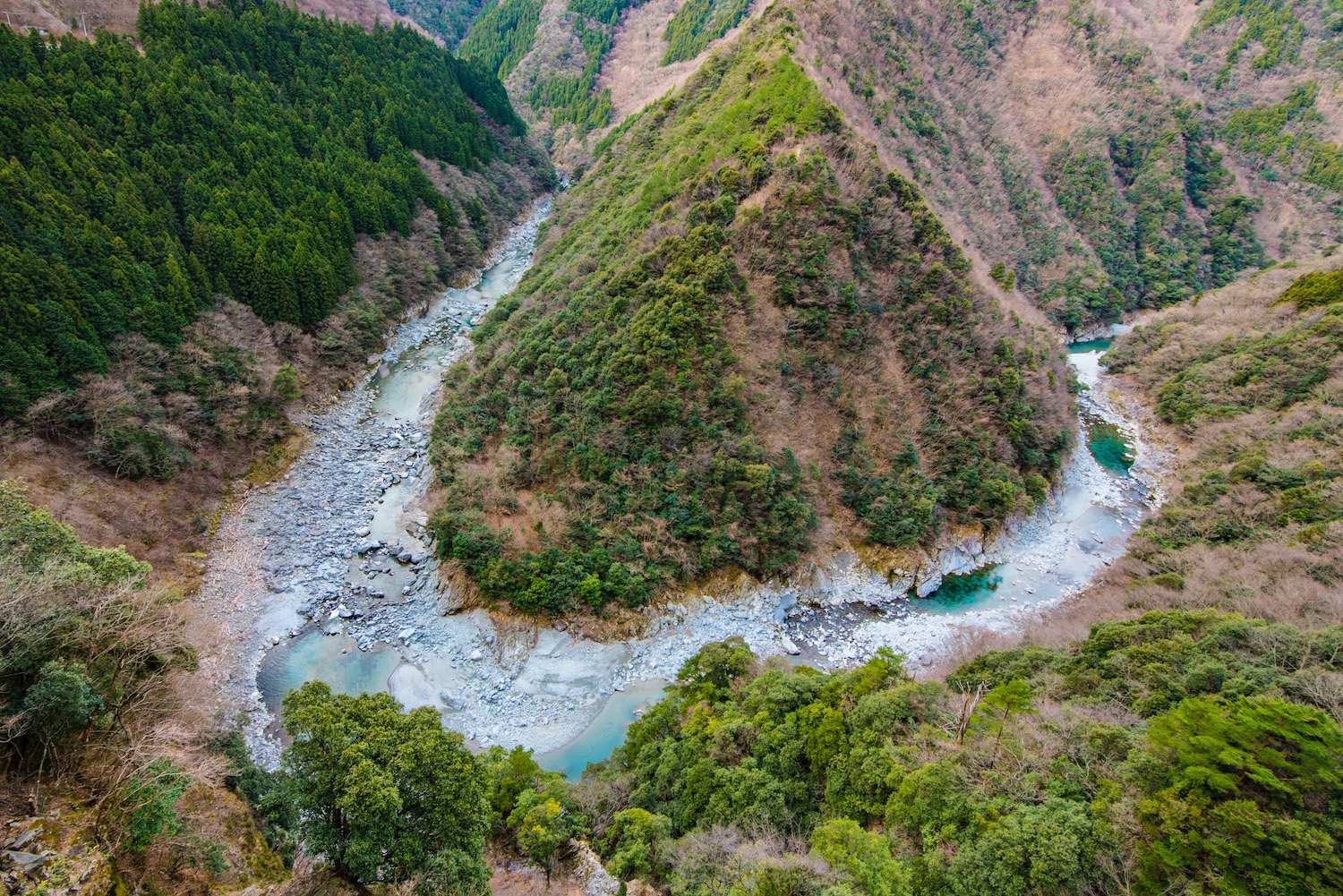
The most iconic spot in the Iya Valley, visually speaking, is a dramatic bend in the Iya River that most Japanese have come to associate with it. Interestingly, there doesn’t seem to be any thematic or mythological connection between the shape of this bend and the name I Ya, which translates to “Ancestor Valley” in Japanese. At any rate, looking down onto this landform will definitely be a highlight of your Iya Valley itinerary.
Say “Konnichiwa” to the Peeing Boy
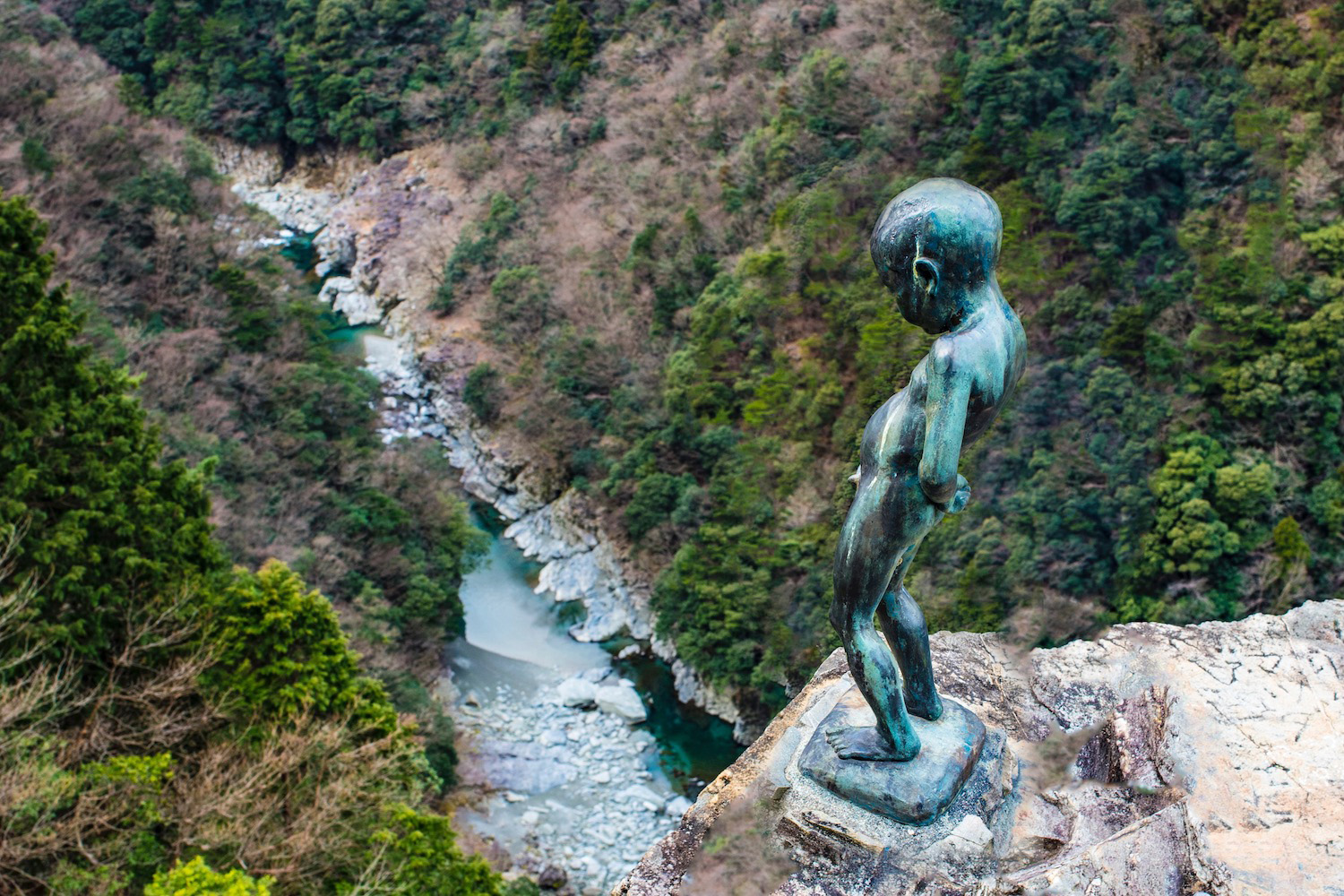
Although the Peeing Boy of the Iya Valley seems to be an homage (or at least a reference) to the Pissing Boy of Brussels, I’m not sure this was intention. Rather the statue, which was erected in the late 1960s, is a monument to the tendency of local young men to relieve themselves high above the river below. Like the one in Brussels, this statue is pretty small and unimposing—I wouldn’t recommend spending more than a few minutes here.
Boat through Oboke Gorge
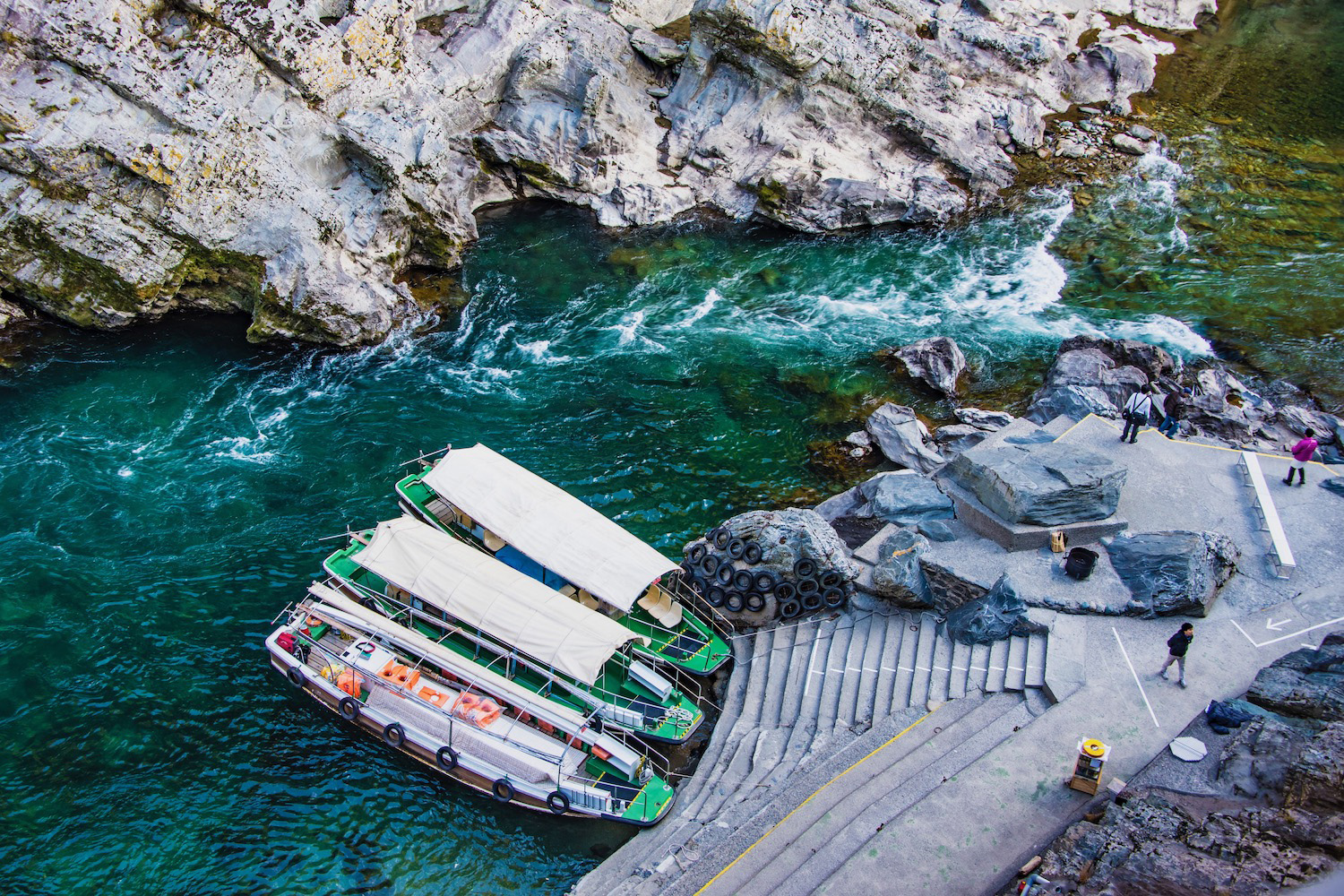
Water adventures are among my favorite things to do in Shikoku, and the “pleasure boat” ride through Oboke Gorge is one of the most scenic. Note that if you decide to follow in my footsteps and visit during early February, it’s going to be extremely cold. I certainly wasn’t dressed appropriately; I paid the price as such. If you visit during summer (perhaps after hiking on Mt. Tsurugi) this might be rather refreshing indeed.
(Try to) cross the Kazurabashi Bridge
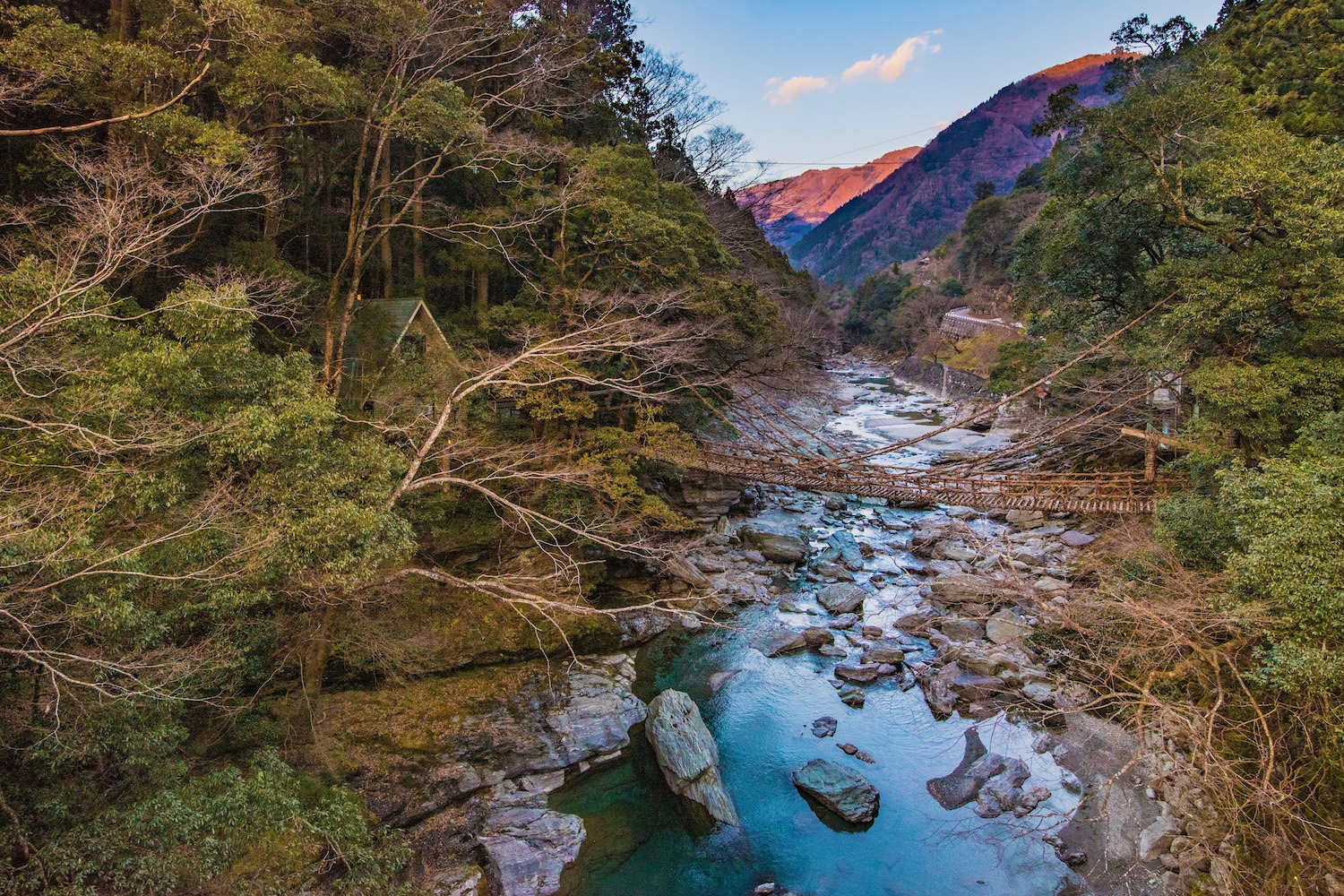
There are several “rope” bridges in the Iya Valley, but my favorite is Kazurabashi, whose name actually directly translates to “vine bridge.” Walking across here requires a certain amount of mind over matter, in spite of being in Japan, which means you more or less know it’s safe. My advice is to move relatively quickly, and also to choose footwear that isn’t going to caught in any of the bridge’s holes or depressions.
Take a bath at Iya Onsen
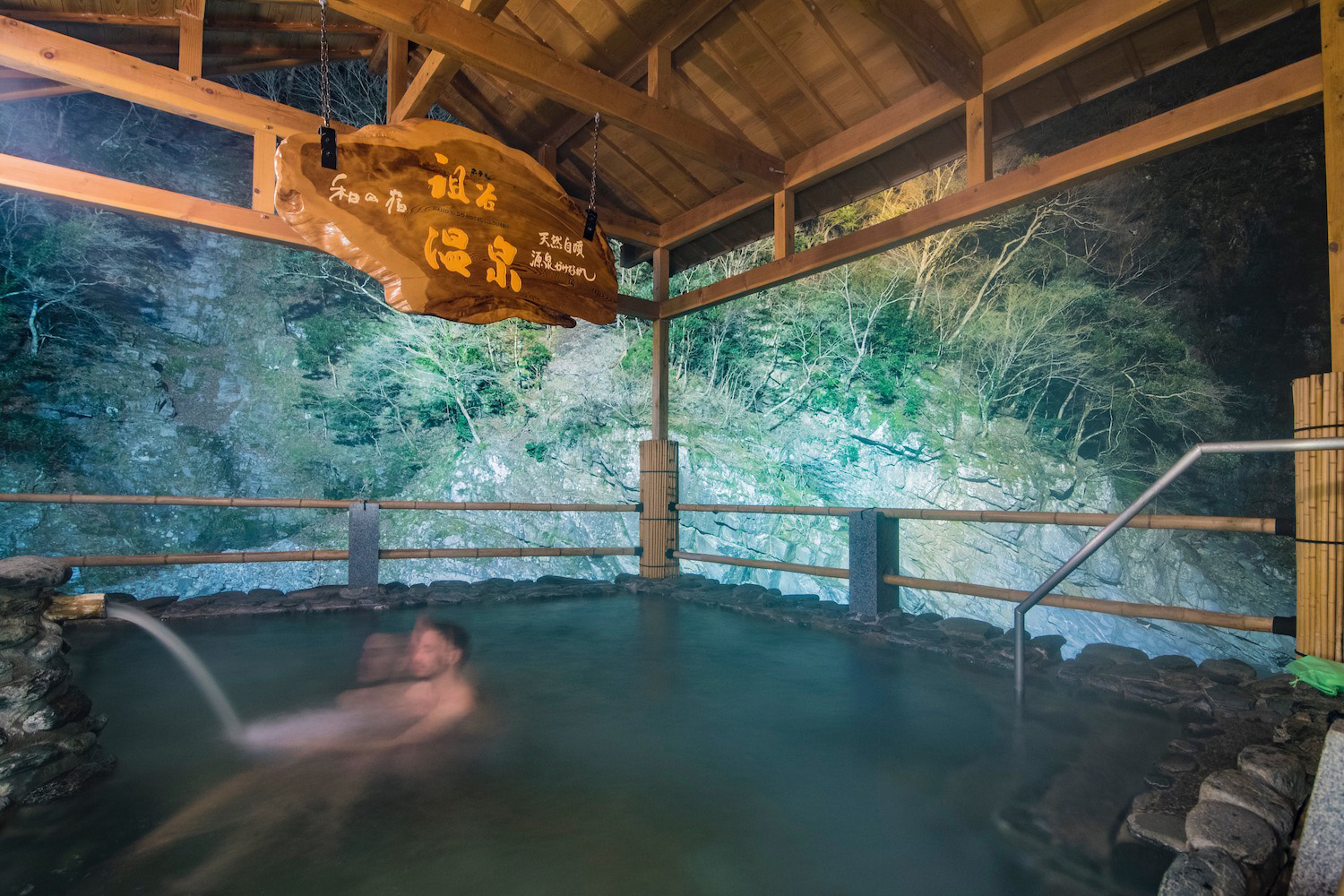
One of my favorite Shikoku hot springs is Iya Onsen, with various hotels offering baths bubbling with its waters at the bottom of the Iya Valley. This—that there are many hotels offering access—is the good news. The bad news? The onsen isn’t open to the general public, which means you’ll need to stay at one of the relevant hotels or ryokan in order to avail the warmth of their healing waters, a perfect conclusion to your Iya Valley itinerary.
Where to Stay in the Iya Valley
I’ll be honest; Many Iya Onsen hotels (including Hotel Iyaonsen itself) are expensive, outdated and prone to being sold out. To address this problem, I have an easy solution: Approach where you stay with ambiguity. This is advisable not only in the sense of your specific accommodation (simple lodging such as 4S Stay Awa-Ikeda Ekimae and Yamaya Base are perfectly accessible), but in terms of its location, particularly if you have your own set of wheels.
To be sure, nothing says you have to sleep a night in the Iya Valley, even if committing to do so will give you more time to explore the attractions I’ve mentioned above. You can absolutely visit on a day trip from Tokushima or Takamatsu—particularly, again, if you’ll have your own private transportation, and won’t need to be at the whims of the relatively thin bus schedules in this part of Shikoku.
Other Shikoku Destinations
Chances are very good that your Shikoku trip will neither begin nor end in the Iya Valley. Assuming you start in Tokushima and enter Iya Valley from there, here’s how to conclude your trip:
Other Iya Valley FAQ
How do I get to Iya Valley?
You can reach the Iya Valley by flying or traveling by bus to the city of Tokushima, on Shikoku island, than either riding the train (to Awa-Ikeda) or a bus or driving into the Iya Valley. Iya Valley is closer to Osaka and Kyoto than it is to Tokyo, although you’re likely to fly in from Tokyo; the journey time should be similar (about 3-4 hours, when all is said and done).
Which prefecture is Iya Valley?
The Iya Valley is in the western part of Tokushima prefecture, one of the four prefectures that makes up Shikoku island. However, it’s also relatively close to the city of Takamatsu in Kagawa prefecture; some travelers begin their journeys here.
In which prefecture can you find ancient vine bridges?
There are ancient vine bridges throughout Japan, although the most common one is Kazurabashi, located in the Iya Valley, in the western part of Tokushima prefecture on Shikoku island.
The Bottom Line
Should you visit the Iya Valley? Japan certainly offers more accessible natural experiences, and ones that are more traditionally popular. On the other hand, whether you walk across a rickety rope bridge or ride a boat through a rock-walled gorge, Iya Valley is one of the wildest places in Japan. With this being said, if you plan to be in Shikoku anyway, it’s easy to integrate this Iya Valley itinerary into your trip—it sits roughly halfway between Tokushima and Takamatsu; you can also visit it on your way to Kochi. Here’s to hoping we can all enter Japan again soon—and that you can see for yourself!






